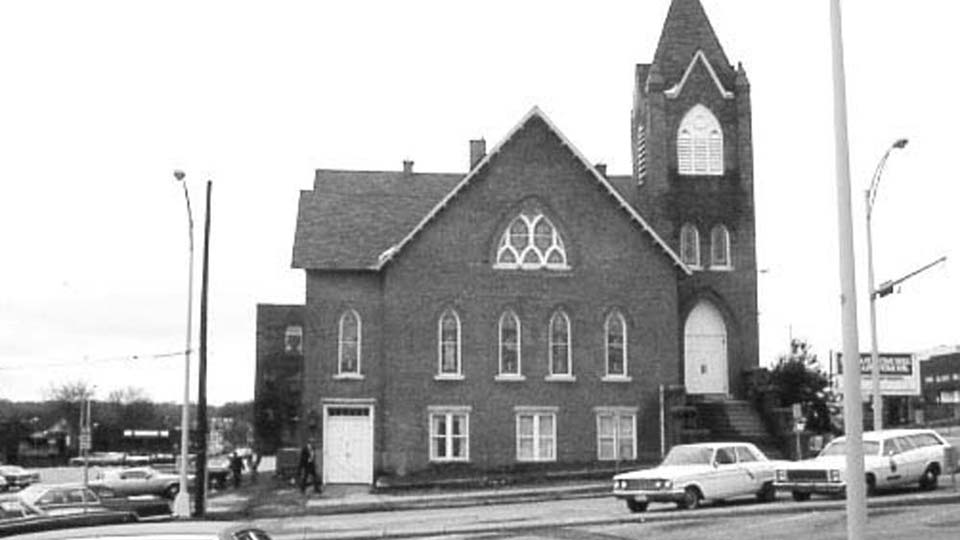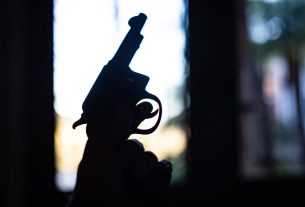S.T. Peden Jr. remembers watching Donald J. Sampson, Greenville’s first Black attorney, walk to the Greenville County Courthouse on South Main Street, just a few blocks away from the cluster of Black-owned businesses that have long since disappeared.
“We used to be so proud because he was tall, stately, dressed well,” Peden recalls, looking back on the 1950s, when Black-owned offices thrived around East Broad Street. “It was something proud for Black folks to see at the time of segregation.”
A couple of buildings are all that’s left of Greenville’s historically overlooked Black business district, which once spanned roughly eight blocks off Main Street. The Greenville Historical Society refers to the area now as North of Broad.
John Wesley United Methodist Church at East Court Street is one of those buildings, where Black congregants began worshipping shortly after the Civil War. A block away stands what used to be known as the Working Benevolent Temple and Professional Building.
In 1922, an organization called the Working Benevolent State Grand Lodge of South Carolina erected the three-story brick building at East Broad and Falls streets. With chapters in Greenville, Richland and Charleston counties, the lodge served as a health, welfare and burial-benefit society for African Americans, according to a Historical Society PowerPoint.

Peden, who was born and grew up around Haynie Street — a short bus ride or walk away from the area — remembers the offices that once housed Black lawyers, doctors, dentists, finance professionals and the like. Now, the law offices of Nelson & Galbreath occupy the space.
The Temple building, as it’s commonly called, stands as a cornerstone of Kendra Williams’ tours of the area. And on a stunning spring afternoon, she points to the Temple’s timeworn cornerstone, etched with names of some of the most prominent Black Greenvillians.
Williams, who serves as executive assistant to Mayor Knox White, says she started offering the tours in January after hearing stories about the area that also included the Liberty Theatre, a movie and vaudeville house for Black audiences; the McBee Avenue Service Station; and a meatpacking plant, among others.
Another marquee site: the original Phillis Wheatley Center. Peden remembers playing basketball at the East Broad Street facility, once known as the Black YMCA, back when African Americans were barred from the whites-only YMCA.
Williams says she felt compelled to keep those memories alive at North of Broad.
“Blacks in Greenville contributed to what Greenville is today. There is history — they weren’t just indentured servants or slaves here, they’re not just the bellmen at the hotel. They actually contributed to the city in a great way,” she says.
Peden, who graduated from the all-Black Sterling High School in 1968, says the end of segregation in Greenville in 1972, when Sterling closed, marked the end of the Black business district.
Williams agrees.
“There was kind of a Catch-22 with the Black district and integration,” she says. “You want to be able to go anywhere at any time, but you also want to be able to have the resources to get into something that has been renovated downtown.”

Call it business gentrification. Rising real estate prices and developers putting up costly buildings and charging higher rent drove some out, she says. Still other businesses saw opportunities outside of downtown that hadn’t been available until then, she says.
“Or maybe,” she adds, “you were antagonized. Maybe you were ‘encouraged’ to move on.”
Still, Peden, whose father ran a barbershop there, remembers the district’s friendly, safe, family atmosphere. Now, though, with no formal recognition of North of Broad’s role in Greenville’s past, he says there needs to be a recognition of the impact the area had on Greenville residents and the city as a whole.
“It gives the image that we have always worked for somebody else as opposed to the fact that we were owners of businesses and land and property downtown, one block off of Main Street. And that’s what’s hurtful,” Peden says. “It’s not even acknowledged as being a part of downtown Greenville, and it’s one block from City Hall.”
And that, Williams says, is a travesty she and Peden and others are working to change — perhaps one tour at a time.
“The reality is Black history is American history. If you’re looking at something historical and you don’t see a Black person associated with it, you’re missing the history,” she says.
Scanning an area that in other cities might be called Black Wall Street, she adds, “This is Black history here in Greenville. It’s Greenville history.”
For more information about Kendra Williams’ North of Broad tours, visit http://www.bhigtours.com. The two-hour, 2½-mile tours take place three Saturdays a month, weather permitting. Cost is $20.
Selected sites
Working Benevolent Temple and Professional Building- Broad and Falls St.
- Served as the center of Greenville’s Black district
- Housed offices for African American doctors, lawyers, dentists, a newspaper, insurance firms and the first Black mortuary in Greenville
- The center for Greenville’s civil rights activities during the 1960s
- Placed on the National Register of Historic Places in 1982
Phillis Wheatley Center – East McBee Avenue
- The center’s first location was on East McBee Avenue until a new site was built at 121 E. Broad St. 1924.
- During the 1930s, the center was known as the Black YWCA and included playgrounds, tennis courts and fencing.
- Music and dance lessons were provided, and families could access day care and recreational opportunities.
- Housed the first library in Greenville for Blacks.
- During World War II, the center served as a meeting place and recreation destination for Black GIs stationed at the Greenville Army Air Base, later Donaldson Air Force Base.
Liberty Theatre, 14 Spring St.
- Opened in 1919 with a capacity of 800.
- Served as a vaudeville and movie house for Black audiences.
- Beloved Greenville entertainer Clayton “Peg Leg” Bates discovered there. Ethel Waters performed there in 1922.
- Presented Jolly John Berringer’s Big Colored Show: “The smartest of colored actors ever assembled in one company.”
East McBee Avenue Greenville Public Library for Blacks
- Replaced the single room in the Phillis Wheatley Center, where Thomas Parker established the first library for African Americans in South Carolina in 1923.
- A sit-in staged at the public library on North Main in March 1960 marked the first local challenge to segregated facilities in Greenville.
Source: Greenville Historical Society




